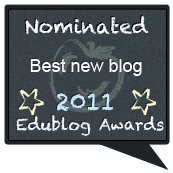In Laurie Halse Anderson's Revolutionary War novel Forge, there are vivid descriptions of the food, clothing and basic conditions that the soldiers endured during the winter encampment at Valley Forge. We are very fortunate to go to school about one mile away from the historical site, so we decided to experience the book as fully as possible.
Lately, the students have expressed a lot of curiosity about the firecake, porridge and vinegar sticky rice described in the book. Today in class, we made these foods (to the best of our ability in a classroom) and the students enjoyed the experience, but it also made it very real what rations were like at the time.
During the war, often rations for an entire regiment included only a small cloth bag of flour. During these times, soldiers would make "firecake." Each soldier combined their ration of flour into a large pot and mixed it with creek water. The pasty mixture would then be spread over heated flat rocks where it would bubble and sputter into a hard unleavened bread. The taste was revolting and the texture was even worse by most accounts.
Our firecake was prepared on heated stoneware in the classroom. The hardened cakes were difficult to remove from the stone and tasted pretty terrible. We tried to imagine, however, that the taste would have been worse had they been prepared with dirty creek water and on a real stone.
Several students were also unfamiliar with porridge, so we made a modern version of this dish, as well. Surprisingly, our students had never tasted plain oatmeal, so we prepared an oat porridge of fine-ground oats, water and salt.
Finally, the book describes one instance when the rations included only rice. The soldiers made a pot of sticky rice, again with heavily peppered creek water, then coated it in vinegar to ward off scurvy. We made some simple brown rice in peppered water, then served it with a dash of white vinegar.
Obviously, the students didn't care much for the war-era foods that we created, but that wasn't really the point. Students were better able to imagine what life would have been like during the winter encampment that took place right here in our area over 200 years ago. To wrap up the assignment, we wrote journal entries about the experiences of the soldiers.
Friday, January 20, 2012
Subscribe to:
Posts (Atom)








